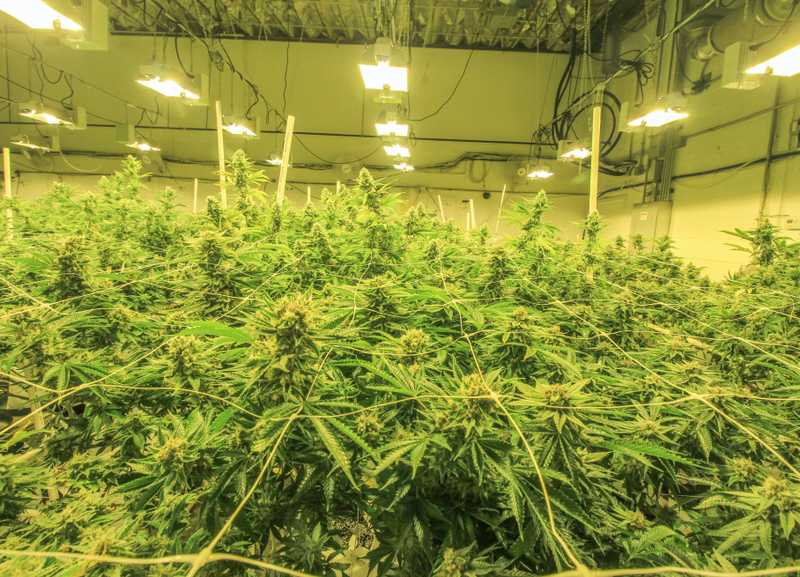Cannabis has been legal in Canada for well over a month now. But if you head down to your local marijuana retailer, you may be disappointed. Across the country, cannabis stores are running short on product.
In Québec, Société québécoise du cannabis (SQDC) is the only retailer authorized to sell cannabis in the province. SQDC reduced the number of days its cannabis stores are open from seven to four days a week, because of a lack of product.
New Brunswick, meanwhile, temporarily closed half of its cannabis stores due to marijuana shortages. Most other provinces and territories have faced similar problems.
RELATED: THE HIGHS & LOWS OF ONE WEEK OF LEGAL CANNABIS SALES
Perhaps surprisingly, consumer demand isn’t what’s causing a lack of product, at least not entirely. The reasons for the shortages are far more complicated—and the implications more serious.
Cannabis Shortages: Less About Demand, More About Red Tape
The first day of legalization saw hours-long lineups at cannabis stores across the country, quickly followed by reports of stores closing because they sold out of product.
Demand had been high during the first few days of legalization, so it wasn’t entirely a surprise that many stores ran out of stock. What’s surprising is that after more than a month since legalization, stores are still struggling to restock their shelves. Even worse, it may be years before these supply problems are resolved.
We’ve known since at least 2015, when Justin Trudeau’s Liberals won the general election partially on a promise to legalize adult-use marijuana, that prohibition was on its way out. Yet, judging by the chronic marijuana shortages across the country, you’d think that legalization came completely without warning.
So, what’s actually causing the shortages?
The reasons are complex, but they mostly boil down to two issues:
- Inexperienced producers
- Tough government regulations
An Inexperienced Cannabis Industry Leads to Problems
While some players in the current legal cannabis industry may have formerly worked on the illicit side of the business, making the transition from the underground economy to the legal one isn’t straightforward. Suddenly, cannabis producers and retailers who formerly worried about not getting arrested now worry about making sure they’re following the proper rules and regulations.
This lack of experience has caused problems. Some producers appear to have overpromised how much marijuana they could actually supply, leaving many retailers short on opening day. The Nova Scotia Liquor Corporation, for example, only got about 40% of its initial product order, while Cannabis NB stores received only 20–30% of the cannabis it ordered by the time legalization rolled around.
Regulations Hold Cannabis Back
But the fact that producers have been unable to meet demand isn't entirely because of their inexperience; it’s also due to the fact that getting government approval to grow cannabis is notoriously tough.
Ironically, despite the fact that Canada is the largest country in the world to legalize marijuana, growing it here is, according to Khurram Malik, CEO of Toronto-based cannabis company Biome Grow Inc., “frankly more difficult than anywhere else in the world.”
RELATED: WILL CITIES BE ABLE TO OPT OUT OF LEGAL CANNABIS?
The licensing requirements for producers set out by Health Canada are strict. The timeline from applying for a licence to actually getting a consistent product shipped to retailers can be up to two years—much longer than the three to five months it took illicit cannabis producers to grow and harvest their plants.
For its part, Health Canada puts most of the shortages down to growing pains in the industry and says it’s taking steps to make licensing a bit easier on producers. One way it’s doing this is by increasing production capacity to 1.2 million square metres, up from 185,000.
Cannabis Shortages Are More Than an Inconvenience
For those who use marijuana only recreationally, cannabis shortages are merely an inconvenience. For others, however, they’re much more serious. Medical marijuana consumers, for example, have been particularly hard hit.
Unlike recreational consumers who can shop around for cannabis from different shops, medical marijuana patients must get their cannabis from producers who hold a specific government licence. As a result, many medical marijuana consumers suddenly find themselves without the cannabis they need to manage their health conditions, including depression and chronic pain. Even those who use non-psychoactive cannabidiol (CBD) products are having trouble finding the products they need.
A second serious problem with cannabis shortages is that they give fuel to the black market. One of Trudeau’s reasons for legalizing marijuana was to take the criminal element out of cannabis. Yet about 35% of Canadians say they still use their old marijuana dealers.
RELATED: BLACK MARKET ADAPTS TO LEGAL MARIJUANA IN CANADA
To be clear, shortages aren’t the only reason the black market continues to thrive. A Canada Post strike, relatively few brick-and-mortar stores in large parts of the country (most notably Ontario), and Quebec’s plan to raise the legal age for cannabis use from 18 to 21 also give reason for illicit dealers to stay in operation. Shortages, however, do seem to be the main driving force that’s keeping the black market going in Canada.
None of this is to say that cannabis legalization was a mistake. Inevitably, there were going to be problems trying to end nearly a century of prohibition, no matter how much time and planning went into it. But cannabis shortages are a serious problem, and the sooner they’re addressed, the better.
Photo credit: Alex Person
